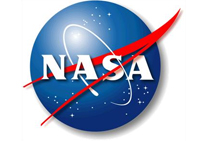What’s New at NASA’s Space Place Website 20 Nov 2011

Space is not always about, um, space. Often its about Earth, our home and about us, how we are changing Earth. Getting into orbit above it all gives us a whole different perspective on our beautiful and precious planet. What new things can we learn about Earth — from space?
New at spaceplace.nasa.gov One type of Earth-observing spacecraft is the Geostationary Operational Environmental Satellites, also known as GOES, built by NASA and operated by the National Oceanic and Atmospheric Administration, or NOAA. The GOES are workhorse satellites doing everyday tasks; they watch and warn of developing severe weather, monitor events such as floods and fires, and monitor solar storms that can have damaging effects on Earth.
The next generation of the GOES, series “R,” will produce much more data, and of higher resolution, than the current GOES, that meteorologists and other scientists on the ground who receive and depend on the GOES data are building new computer systems to handle the huge influx that will be coming from GOES-R.
A fun, colorful — dare we say addictive — new game on The Space Place has you hopping around like mad to keep up with this incoming wealth of information. The game is called “Satellite Insight.” Its game “pieces” represent data from the kinds of observations the satellite’s advanced instruments will be making, in order to reinforce the power and importance of studying Earth’s — and the sun’s — dynamic processes from space. Check it out at http://spaceplace.nasa.gov/satellite-insight.
We have also created an iPhone version of the game. It is NOAA’s first iPhone app and only NASA’s second iPhone game. Search for “Satellite Insight” at the Apple iTunes App Store.
Space Place en espanol Earth from space isn’t all business, however. “Spuzzled” has interactive puzzles that showcase Earth as art” The astonishing, natural color images are from LandSat 7. They show unique views of Earth from all over the world. With short captions and a big locator star on a world map, the puzzle sneaks in a little bit of geography with the art and fun. To give Spuzzled a try, visit http://spaceplace.nasa.gov/sp/spuzzled.
Focus on tsunami from space! Another way to look at Earth from space is at an angle, or, better yet, from nine angles all at once. “Getting the right angle on the story” describes and shows how a special instrument on the Terra satellite can spot a tsunami from space. Although satellites might not be able to warn people on endangered coastlines in time, the information is being used to study how tsunamis behave when they hit a coastline. This understanding, along with the ocean-based tsunami warning system, will improve tsunami evacuation plans and, hopefully, save many lives. To learn more about tsunamis, visit http://spaceplace.nasa.gov/tsunami.
For the classroom Katrina will, for a long time (we hope), be considered the “mother of all hurricanes” of the century. Our Katrina poster, which you can download to print, shows the monster hurricane from space as it bore down on the Gulf states. The poster explains how the GOES satellite tracked the storm, evaluated its severity and predicted its track. On the back of the poster (which you can easily print as individual pages) is an easy-to-understand explanation of how hurricanes form and a student activity comparing the predicted and actual storm tracks. Download the Katrina poster at http://spaceplace.nasa.gov/posters/#katrina.
For out of school time For the younger set, we have the GOES and GOES-R fun activity books to download and print. Each booklet has 14 pages of simple word, picture and coloring activities for early readers. The theme? Weather. Weather is an adventure! To download the booklets, visit http://spaceplace.nasa.gov/posters/#funpad.
Special Days Month of November: Aviation History Month Find out from Dr. Marc how airplanes ever got off the ground in the first place. http://spaceplace.nasa.gov/dr-marc-technology
Nov. 5: Gunpowder Day This is an explosive subject, but historically and scientifically important, nonetheless. See how you can use it to explain how orbits work at http://spaceplace.nasa.gov/how-orbits-work.
Nov. 8, 1895: X-rays discovered by W. C. Roentgen. Find out where X-rays fit into the electromagnetic spectrum by taking a stroll through the “Land of the Magic Windows,” http://spaceplace.nasa.gov/magic-windows.
Nov. 27, 1571: Birthday of Johannes Kepler Kepler is considered the founder of modern astronomy. Find out why from Dr. Marc at http://tinyurl.com/dr-marc-kepler.
Dec. 6, 1945: Percy Spencer invented the microwave oven. Another opportunity to check out the electromagnetic spectrum. See where microwaves fit in as you play “Photon Pile-up” at http://spaceplace.nasa.gov/photon-pileup.
Dec. 11, 1719: The aurora borealis was first recorded in New England. Find out about space weather, the cause of this beautiful light show, at http://spaceplace.nasa.gov/spaceweather.
Dec. 14: Geminids Meteor Shower Moonlight makes viewing not so great this year. But, you can still learn about meteor showers and prepare for the next good, moonless meteor shower, the Lyrids, on April 21 and 22, 2012. http://spaceplace.nasa.gov/meteor-shower
Last words . . . We’ve given you just a sample of the earth-science related resources on The Space Place. We encourage you to explore our Earth menu for yourself and see what else there is to explore, do and play.
iPhone and iTunes are registered trademarks of Apple Inc.








